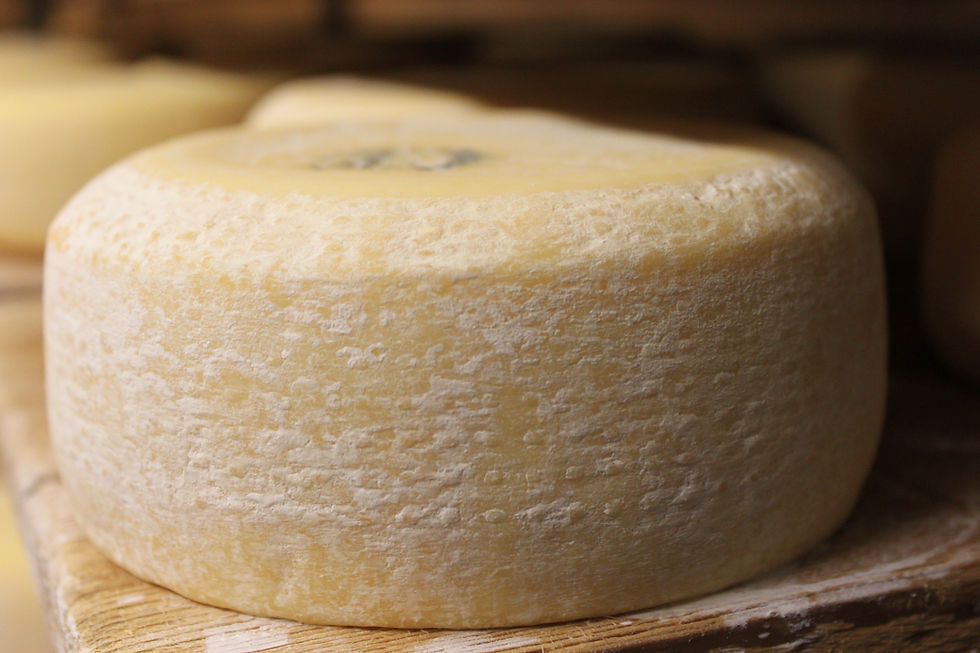Clothing Strategies for Summer Hiking in the Alps
- Tom Wilkinson

- Dec 17, 2024
- 4 min read
Stay Comfortable, Protected, and Efficient on Your Alpine Adventures
When hiking in the Alps during the summer, weather conditions can vary dramatically – from cool mornings and scorching midday sun to sudden afternoon showers and windy peaks. Selecting the right clothing is key to enjoying your trip, staying safe, and keeping your pack light. Here’s our guide to the ideal clothing strategies for summer hiking to help you maximise functionality, minimise bulk, and tackle the Alps in comfort.

1. The Power of Layering
Even in summer, the Alps can throw a wide range of temperatures at you. Layering is the best approach to stay comfortable and adaptable:
• Base Layer: Your base layer sits closest to your skin. Opt for moisture-wicking fabrics like merino wool or synthetic blends to keep sweat off your skin and regulate temperature. Avoid cotton – it absorbs moisture and dries slowly, which can leave you chilled.
• Mid Layer: This provides insulation. A lightweight fleece or a synthetic insulated jacket will offer warmth when temperatures drop, especially early mornings or on breezy summits.
• Outer Layer: Your shell protects you from wind, rain, and sudden weather changes. Choose a waterproof, windproof, and breathable jacket made from materials like GORE-TEX or other lightweight, high-performance membranes.
Tip: Bring a packable outer layer that can be stuffed into your backpack. It’s light and easy to grab when needed.
2. Minimising Bulk and Weight
Every gram counts when hiking. Here’s how to pack efficiently without compromising on functionality:
• Multi-Use Clothing: Choose items that serve multiple purposes. For example, a lightweight fleece can act as both a mid-layer for warmth and casual wear at the hut.
• Pack Lightweight Fabrics: Modern synthetic materials, like nylon or polyester blends, provide durability without adding weight.
• Plan for Versatility: Convertible trousers (zipped legs) offer the flexibility of full-length pants and shorts without needing to carry two items.
• Go Minimal on Spares: Bring just enough clothing to stay clean and dry. For a multi-day hike, lightweight quick-dry shirts and underwear can be rinsed and re-used.
3. Fabric Materials – Performance Matters
Your choice of fabric can make or break your comfort on the trail.
• Merino Wool: A natural option that wicks moisture, resists odors, and regulates temperature. Ideal for base layers and socks.
• Synthetic Fabrics: Quick-drying and durable, synthetics like polyester or nylon are great for shirts, shorts, and outer layers.
• Softshell Fabrics: For windy or light rain conditions, softshell trousers or jackets provide excellent breathability with added protection.
• Avoid Cotton: It holds moisture and takes forever to dry, making it a poor choice for active hiking.
Pro Tip: Look for UPF-rated clothing for additional sun protection in the intense alpine sunlight.
4. Managing Temperature Regulation
Alpine weather can swing from cool to hot in a matter of hours. Here’s how to adapt:
• Ventilation: Choose clothing with zippers or vents for breathability (e.g., underarm zips on jackets or mesh-lined pockets on trousers).
• Light-Coloured Clothing: Lighter colours reflect sunlight, keeping you cooler in exposed areas.
• Layer Flexibility: Start cool in the morning, add or remove layers as needed, and don’t forget a mid-layer for chilly summits.

5. Shorts vs. Full-Length Trousers
The shorts vs. trousers debate comes down to conditions and personal preference:
• Shorts: Great for hot, low-altitude trails with minimal brush or insects. Look for durable, lightweight, quick-dry hiking shorts.
• Full-Length Trousers: Essential for higher altitudes, cooler temperatures, or trails with rocks, vegetation, and exposure to insects. Convertible trousers offer the best of both worlds.
• Consider Sun and Protection: If you choose shorts, pair them with lightweight calf gaiters or apply sunscreen to protect exposed skin.
6. Headwear and Eyewear – Don’t Skip These Essentials
• Headwear: A wide-brimmed hat or lightweight cap protects you from the intense alpine sun. For cooler moments or wind, carry a lightweight beanie or buff. Buffs are versatile and can double as neck protection or a sweatband.
• Eyewear: Invest in UV-protective sunglasses with polarized lenses. The sun’s glare, particularly on snow patches or reflective rock, can strain your eyes without protection.
7. Footwear – A Final Word on Comfort
While not strictly clothing, your footwear strategy ties everything together:
• Choose Lightweight, Waterproof Hiking Boots for maximum protection or normal (not waterproof) Trail Shoes. Trail shoes are great if you're confident it's going to be dry, you are sure there won't be snow and ice and you're well practiced in walking or running in them on rough terrain. Ensure that whatever you wear is broken in before your trip to avoid blisters.
• Merino Wool Socks: Keep your feet dry, blister-free, and comfortable with moisture-wicking socks.

Conclusion – Stay Light, Adaptable, and Protected
The key to clothing for summer hiking in the Alps lies in smart layering, lightweight materials, and versatile options that handle changing conditions. Keep your clothing functional, minimize bulk, and focus on comfort and protection – it’ll make all the difference on the trail.
At Mountain Coach, we design trips tailored to your group’s needs, including guidance on packing and preparation for the Alps. To find your next alpine adventure, get in touch with us at www.mountaincoach.co.uk.
See you on the trails!





Comentários